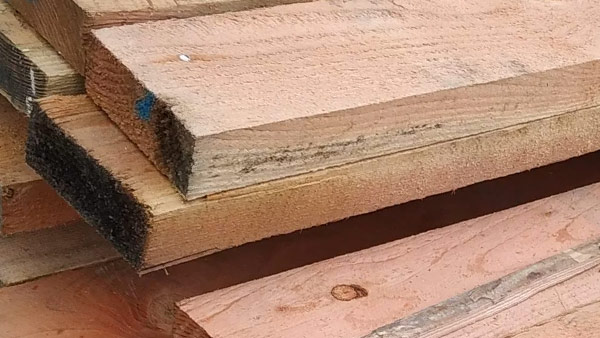In New Zealand, Oregon (Douglas Fir) timber finds versatile use. It serves in construction projects, offering reliable structural support; It’s one of the preferred choices for framing due to its strength and durability. Oregon timber is valued for its appearance in interior design, adding a touch of natural elegance to spaces. Moreover, it proves essential in crafting furniture, flooring, and decorative items, reflecting its adaptability and aesthetic appeal in various applications.

Uses
- Structural framing
- Beams
- Interior panelling
Selection factors
- Does not form a good paint base because of the course texture and pronounced annular rings
- Usually used green for framing to avoid splitting
- Is useful in situations where structural and visual qualities are required, such as beams
| Common names | Douglas Fir, Oregon |
| Species | Pseudotsuga menziesii |
| General description | – Heartwood is pale pinkish-brown – Sapwood almost white – Prominent growth ring – Straight-grained resinous softwood. New Zealand plantation-grown timber is coarser, has wider annular rings and larger knots than that of North American origin – Softwood |
| Origin | Western side of North America, from Mexico to British Columbia |
| Sustainability | In New Zealand Douglas fir is plantation-grown and some ‘clears grade’ timber is imported. In Australia, most is imported from North America with some imports from New Zealand |
| Availability | Readily available in a wide range of sizes and large sections |
| Durability & treatment | Strictly speaking this is a non-durable species and is difficult to pressure treat. In practice it is suitable for internal use providing it is out of ground contact and protected from the weather or damp conditions |
| Drying | Easy |
Technical Specs
| Physical Characteristics | ||
|---|---|---|
| Shrinkage | Tangential | 4% |
| Radial | 2.5% | |
| Strength group | Unseasoned | S5 |
| Seasoned | SD5 | |
| Density | 550 kg/m3 | |
| Hardness | 3 | |
| Durability Class | 4 |
